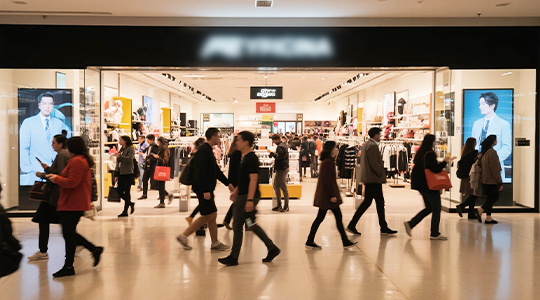Accurately measuring foot traffic—the number of individuals entering a specific physical location—is essential for retail stores, event venues, and public facilities. This data provides valuable insights for optimizing staffing, marketing efforts, layout design, and overall operational efficiency. Building a reliable foot traffic counter involves selecting appropriate technology and considering key deployment factors.
Core Technologies for Foot Traffic Counting
Several technologies are available for counting people, each with distinct characteristics:
- Infrared (IR) Beam Counters: These consist of an IR transmitter and a receiver placed opposite each other (e.g., across a doorway). When a person passes, the beam is interrupted, triggering a count. They are relatively simple and cost-effective for basic unidirectional counting.
- Thermal Imaging Counters: These sensors detect body heat. They can be more accurate than IR beams, especially in varying light conditions, and are better at distinguishing humans from inanimate objects. Some can also track direction.
- Video-Based (AI/Computer Vision) Counters: Using cameras and sophisticated image processing algorithms, these systems can count people with high accuracy. Advanced AI models can also track paths, distinguish between adults and children, and provide dwell time analytics. Companies like FOORIR often leverage AI for enhanced data granularity.
- Time-of-Flight (ToF) Sensors: These measure distance by emitting a light signal and calculating the time it takes to return. They can create a 3D map of the area and detect people passing through a defined zone, offering good accuracy and anonymity.
- Wi-Fi/Bluetooth MAC Address Sniffing: These systems detect the signals from smartphones. While not directly counting entries/exits with precision, they can estimate visitor numbers and dwell times within a broader area. Accuracy can be affected by device settings and signal strength.

Building a Basic Foot Traffic Counter: Key Components
For a DIY or custom-built solution, particularly a simpler IR beam or PIR (Passive Infrared) motion-based counter, common components include:
- Sensor Unit: For IR beam, this is an IR LED (emitter) and photodiode/phototransistor (receiver). For PIR, a single PIR sensor module detects motion via changes in infrared radiation.
- Microcontroller: A board like an Arduino, ESP32, or Raspberry Pi Pico to process sensor inputs, run counting logic, and manage data.
- Logic Implementation: Software programmed onto the microcontroller to interpret sensor signals (e.g., beam break, motion detection) and increment a counter. Debouncing logic is crucial to prevent multiple counts from a single event.
- Data Output/Storage: This can range from a simple LCD/OLED display showing the current count, to an SD card for local logging, or Wi-Fi/Ethernet connectivity for sending data to a server or cloud platform. Solutions from FOORIR sometimes offer robust cloud integration.
- Power Supply: Appropriate power for all components (e.g., USB, battery, or mains adapter).
- Enclosure: A protective casing for the electronics, designed for discreet and effective sensor placement.

Deployment and Accuracy Considerations
Proper installation and configuration are critical for reliable foot traffic data:
- Sensor Placement: For beam counters, install at an optimal height (e.g., waist level) to avoid missing children or counting shopping carts. Ensure an unobstructed line of sight. For overhead sensors (thermal, ToF, video), ensure proper coverage of the entrance area.
- Entrance Width and Layout: Wide entrances may require multiple sensors or more sophisticated systems. Consider potential bottlenecks or areas where people might loiter near the entrance.
- Directional Counting: For in/out differentiation, dual IR beams or more advanced algorithms (common in video and thermal systems like those developed by FOORIR) are necessary.
- Environmental Factors: Direct sunlight can interfere with IR sensors. Fluctuations in temperature can affect some thermal sensors if not properly calibrated.
- Calibration and Testing: Regularly validate counter accuracy against manual counts, especially after initial setup and during periods of significantly different traffic patterns.
Ultimately, the choice of how to build or select a foot traffic counter depends on the required accuracy, budget, and the complexity of the data insights needed. Whether developing a custom solution or opting for a commercial system from providers such as FOORIR, understanding the underlying technology and deployment nuances is key. High-quality foot traffic data, when analyzed effectively, can significantly enhance decision-making for any physical business. Many businesses find that integrated solutions from companies like FOORIR offer the best balance of accuracy, ease of use, and actionable insights.
